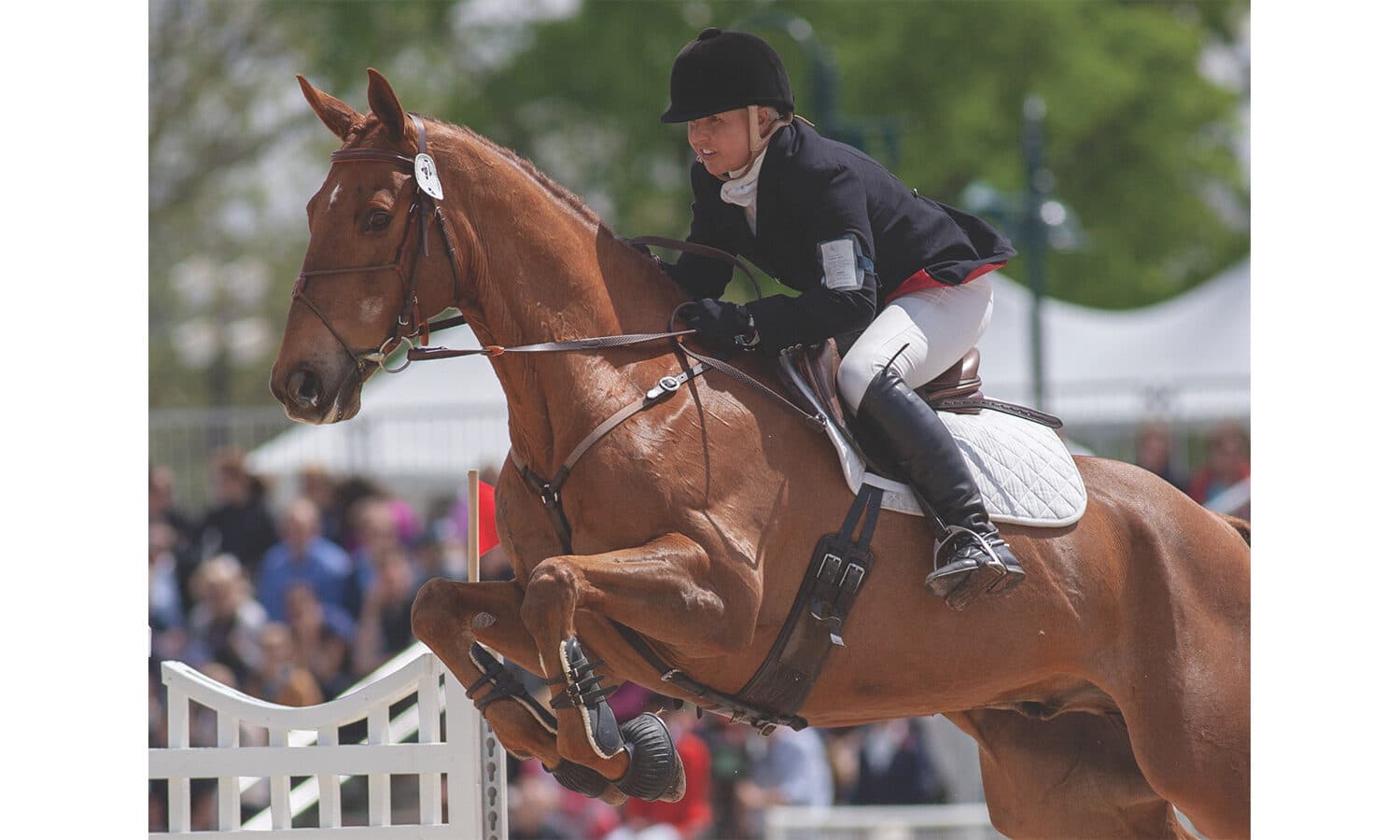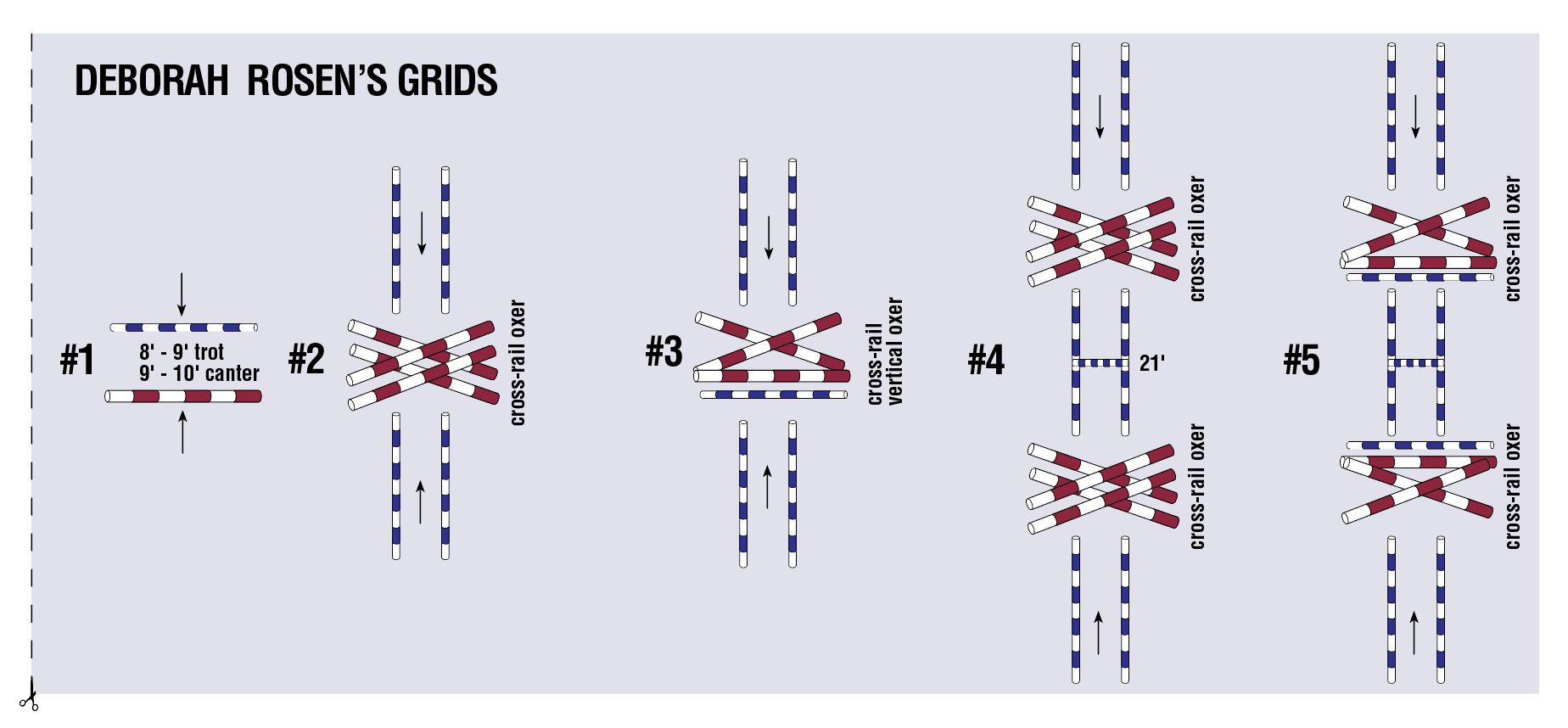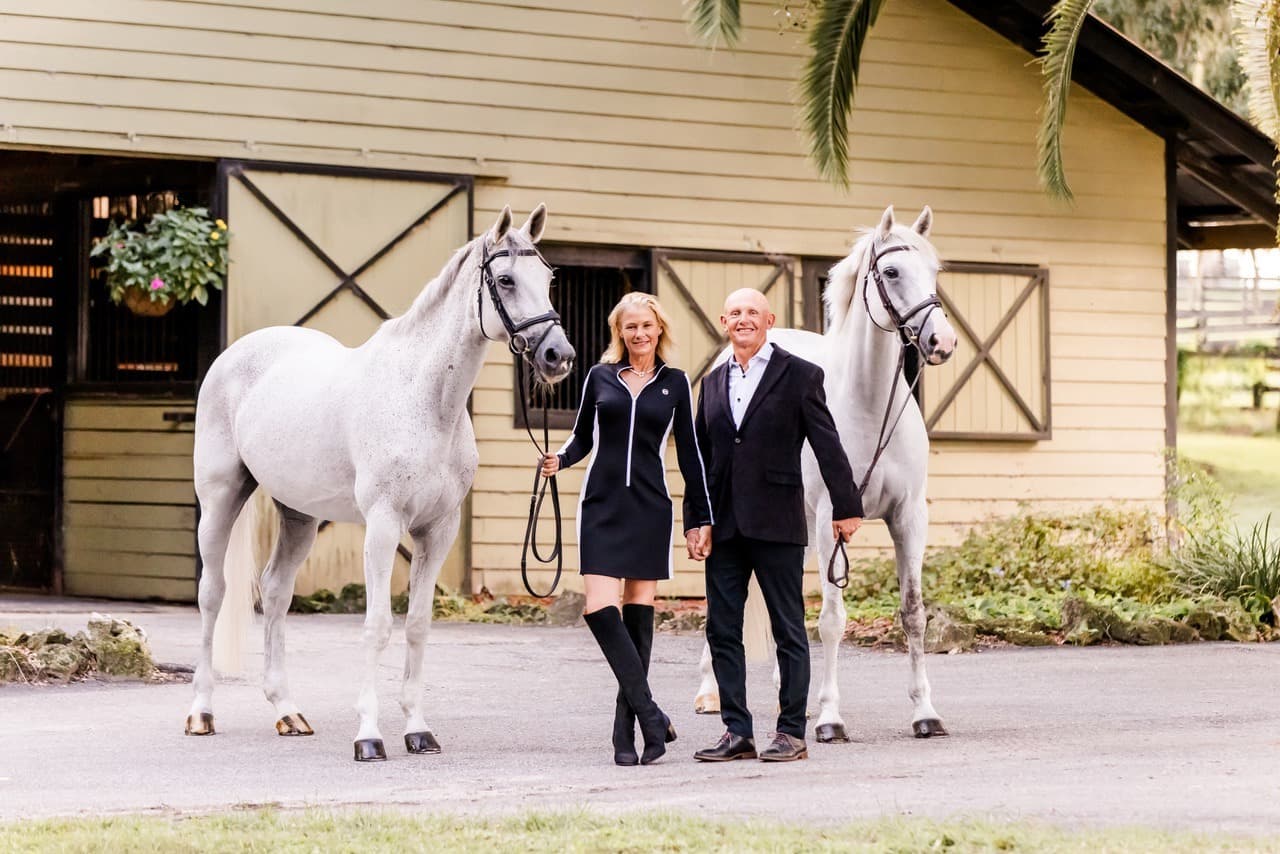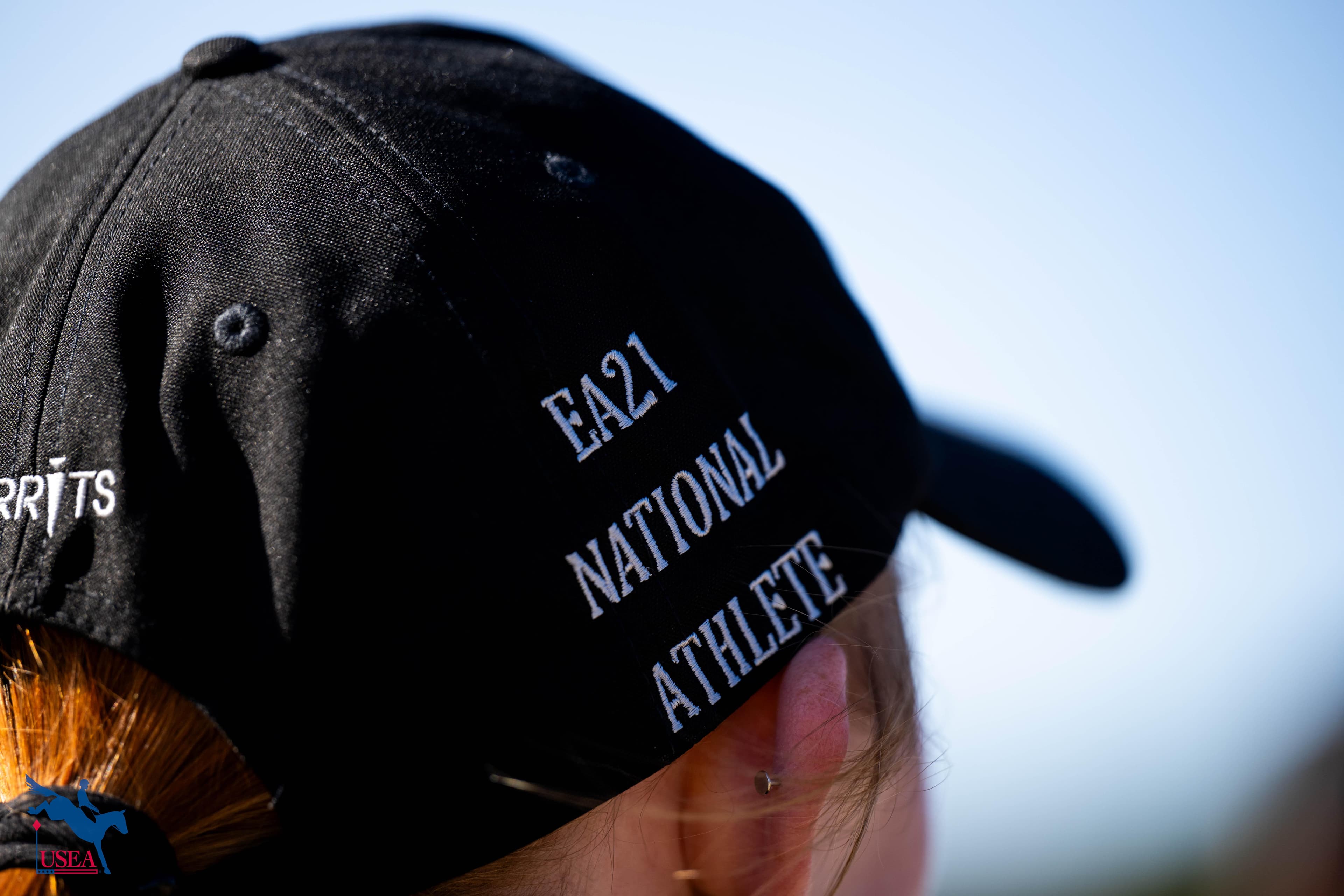Grid Pro Quo with Deborah Rosen

Ready to spice things up this winter training season? Do you want to use being stuck in the arena as an opportunity to fine tune your riding? In this series, we are revisiting some of our favorite Grid Pro Quo articles from Eventing USA to help you use the off-season to your advantage and keep you and your horse in tip-top shape for when it's time to get back out there. Click here to check out other past Grid Pro Quo exercises!
WHY:
Throughout my career I have been blessed with horses that have been too smart for their own good. I developed these exercises over the years based on everything my horses were teaching me. I like to think of this series as very conventional exercises done in an unconventional way. It is less about the layout of everything, and more about how I think about how the horse is reacting to the exercises.
When I was coming up with this series of exercises, I was thinking about how I could use different types of jumps to impress a horse, while creating the shape to their jump that I’m looking for, without having to over jump them. When setting up jumping exercises, I always think of the “impression factor” of how the horse is going to react to the fence. If you’re using a scale of 1-10, a cross-rail would be a 0 for an Advanced horse, but maybe a 6 for a 3-year-old. I try to always keep my horses in the middle numbers, as anything in the 8-10 range is generally overfacing them.
The great part about this exercise is that the jumps do not need to get very high for them to make an impression. My goal is to always have my horses finishing their jump sessions feeling confident. But remember that it’s okay if they feel a little awkward at first. Your job as a rider is to build your horse’s confidence throughout the jump session.
While I think this exercise has plenty to teach horses, it also has a lot to teach the riders. The biggest takeaway is riders learning how they can influence, and improve, the quality of gaits of their horses. These exercises link traditional gymnastics with coursework, so riders learn how to identify and keep that perfect canter throughout an entire course.
HOW:

Before I even think about jumping, I’m looking for my horses to demonstrate a certain level of self carriage that is appropriate for their level of training. My goal is to always approach the jumps with a light contact, but this is directly dependent on the horse’s ability to achieve self carriage. As an exaggeration, an educated horse should be able to walk, trot and canter on a loose rein and not become unbalanced – of course, this is dependent on their rider staying in balance as well! A younger, less educated horse will need their rider to help them along with their balance by working towards a quality, soft contact.
As the rider, these exercises really require that the horses have the freedom to use their topline. This means that you need to be very aware of your own position, and make sure that you are allowing your horse to do their job, versus hindering their efforts.
Once you are ready to start jumping, I’ll begin with Exercise #1 which is a small ground rail to a small vertical. I will begin by approaching it with the ground rail first, but I will move on to jumping it “backward” with the ground rail only on the landing as this really forces the horse to think in a very safe manner. As previously discussed, I’m always looking to impress my horse without overtaxing them. And this is the first example of how I can do that. Jumping the exercise backward requires the horse to develop a different set of footwork. The best part is that if they don’t get it right, they will most likely just experience a little discomfort versus something catastrophic happening, which is a much better way for them to learn.
This first exercise should be jumped forward and backward on a fairly loose rein. The rider will need to be able to hold a steady step with their upper body position and allow their horse to figure out the footwork with very little influence from the reins. After you’ve trotted it a few times, you can move on to cantering this exercise, and keep the same goal of doing so on a fairly loose contact.
Remember that it is okay for your horse to make a mistake, and it is actually preferred that they make a mistake at this early stage than later on. In the end, I want this piece of the jump school to be almost boring before moving on to Exercise #2.
For Exercise #2, the impression factor is the lanes, which are set up to help with straightness. I like to start with the lanes a bit wide, before rolling the rails in a little to make a narrower lane. I tend to only canter this exercise from either direction, with my goal being to be on a soft rein before I get into the lane. Once you’re able to do this, you’re ready to move onto the next piece of the puzzle.
Exercise #3 has the same principles as the first exercise. The vertical rail should always be at or slightly above where the center of the cross-rail is, and depending on the type of jump you’re trying to produce, you can change this jump around a little by making it bigger, wider, etc. This is another example of how you can keep a jump quite small, while still having a big impression factor.
This jump can also be jumped from either direction, and you will notice that your horse will most likely keep their shoulders lifted and have a bit more respect for the jump when they are jumping it backward. I have found this particular set up to help teach a horse to be a little tidier on the back side of oxers. A lot of times, I might finish my jump session here.
If you’re a more advanced rider, you can work Exercise #4 into your jump session. As you build up this exercise remember that the important thing is to keep the impression factor for your horse in the middle range of 5 to 6. If your horse begins to panic for any reason, just lower everything, even if the jumps end up just being piles of rails on the ground. Then build your horse back up from there.
The goal is to teach your horse to make a good shape over the fence, and they can’t learn to do that if they are stressed. There is a lot to this particular exercise that can make a horse feel claustrophobic, so it is very important that you build this exercise from the ground up. The great part of this particular set up is that it teaches the horse to deal with a bit of confinement from all the rails, instead of it coming directly from the rider. I have found that this is a very important lesson for horses to learn as they move up the levels.
I’m including Exercise #5 in this article because it is my go-to exercise for a horse that just doesn’t care. But I only use this for pairs that are established at the Preliminary level or above, and it is really only needed for the overconfident horse that needs to come to an understanding with their rider about proper behavior in the show jumping ring! My general rule of thumb is that if the horse cannot canter a 10-12 meter circle in good balance on a soft rein, they shouldn’t do this exercise. Regardless, these jumps don’t have to be very large.
As with the other exercises, you want to be able to really soften your rein and close your leg as you enter the lanes. You are here in a supporting role, to allow your horse to learn from the exercise in front of them. In this case, you actually want the jumps and rails to have a high impression factor for your horse. You want them to approach the exercise, pause and think about how they can negotiate it successfully. And when they do so, you give them a big pat and take them on a hack!
About Deborah Rosen
Deborah Rosen has coached and competed to the five-star level of eventing. A breast cancer survivor, Rosen (aboard The Alchemyst) completed the 2010 Rolex Kentucky Three-Day Event CCI4* just seven weeks after completing chemotherapy. Later that year, the USEA honored her with the Iron Master Award. Over the years, she and her students have claimed national and international awards from Beginner Novice through FEI. Accomplishments include medals at NAYC, Adequan USEA Gold Cup Series Championships, and numerous national championships. Rosen is currently developing prospects/sale horses and students from her home base at El Sueno Equestrian Center in Somis, California, as well as maintaining a rigorous competition and clinic schedule. She is also assisting the non-profit New Beginning Sporthorses Foundation to reeducate and rehome off-the-track thoroughbreds.














